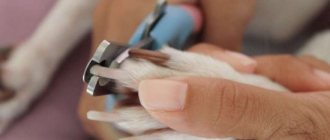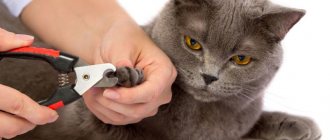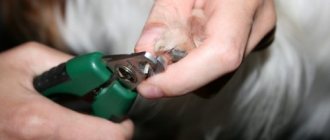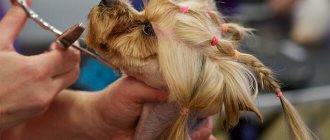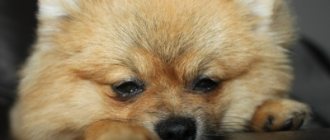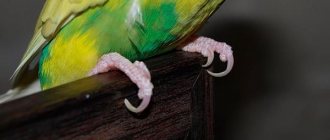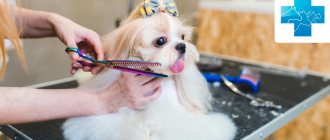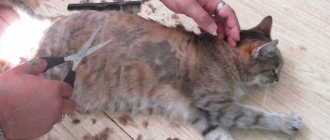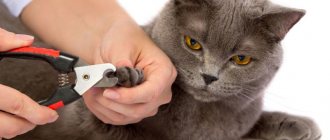One of the mandatory procedures in caring for a toy terrier is regular monthly trimming of the nails, or rather the rounded part. An overgrown claw in a dog can:
- It will break off, damaging a blood vessel;
- Interfere with movement;
- Injure the owner.
The Toy Terrier is one of the smallest dog breeds, so it’s not surprising that most owners are afraid to cut their pet’s nails. They have to regularly visit the veterinary clinic for this procedure, because this process is important, just like ear hygiene. Trimming the nails of a toy terrier is not difficult, and if desired, anyone can learn, which will help save money and time.
Why the problem cannot be ignored
Many owners come to terms with their pet's phobia and stop cutting their nails. But sooner or later, long nails will cause discomfort and pain, but by that time, cutting will become a “mission impossible.”
To trim the nails of a dog that is hysterically afraid, you have to resort to using sedatives. This is a justifiable measure, since the stress caused by nail trimming is more harmful than the side effects of sedatives.
To avoid problems with grooming, the dog must be accustomed to the procedure from puppyhood.
Why long claws are a problem
Fear of cutting nails is a very common problem that owners face. Fear can range from mild hostility to full-blown hysteria, depending on the dog.
What happens when an owner accepts a dog's fear and stops trimming its nails? Overgrown nails affect the dog's posture, which ultimately leads to joint problems and arthritis. Dogs with long nails are often injured. A long claw becomes looser, so the chance of cracking, chipping and breaking increases.
Is it possible to cut a toy terrier's hair?
It is worth considering that grooming a toy terrier with long hair before an exhibition is prohibited - it is not prescribed by the standard. If the pet is very shaggy, four weeks before the competition it is trimmed with thinning scissors so that it grows back for the event. Particular attention should be paid to the hair on the ears.
Interesting materials:
Why do flowers disappear? Why are tomato seedlings purple? Why is soy sauce black? Why are dried figs white? Why are tomatoes purple? Why are hydrangea flowers green? Why do hydrangea flowers dry out? Why do hydrangea flowers turn green? Why do strawberry flowers dry up? Why do tomatoes have purple leaves?
Grinder - an alternative to cutting
Let's start with the advantages:
The next step is to develop an action plan. Keep in mind that training a dog with a phobia is a long process and you will have to work with your dog's comfort and stress levels.
Step #1: The first part of the process involves getting your dog used to having their nails handled. There is no need to use any special tools at this stage. When touching the dog's paws, run your hand over the claws and fingers. When the pet begins to calmly relate to these manipulations, you need to start gently tapping the claws with something safe (pencil, spoon, etc.). Every time the dog reacts calmly or interestedly, praise it. Any signs of stress at this stage should be taken into account immediately. If the dog develops negative associations in the first step, the rest of the process is useless.
Step #2: Introduce your dog to the sander, but don't turn it on. Let the machine be in a visible place so that your pet can inspect it. Repeat step one, but try touching the dog's nails with the clipper turned off. If your pet reacts calmly, move on to the next step.
Step No. 3. Turn on the machine in the next room, leave it on the table and approach the dog. Watch the reaction, if the dog is calm, move the machine closer and turn it on again. Start with low speeds so that your pet is not afraid of the “hum.” Let your pet rest and repeat step two - touch the nail file to the nails while the clipper is turned off. Afterwards, remove the machine from the claw and start it at low speeds. Calm and praise your pet constantly! After 1-2 weeks, the dog will understand that you will not harm him. From now on, you can start treating your dog's claws, but no more than one per day.
Source
